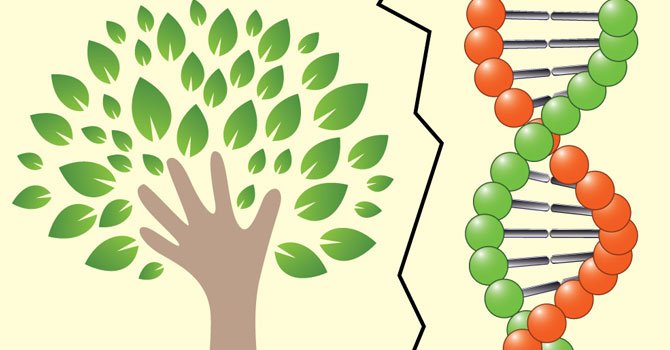
© 2015 50plus Senior News, All rights reserved.
The Search for Our Ancestry: Family Trees vs. DNA Testing
Angelo Coniglio | May 6, 2015, 6 a.m.

I usually encourage genealogy researchers to share their family trees online to make connections with others who may be researching similar information.
Some folks are hesitant to do so, often because of privacy issues, but even more often because they have worked hard and long to develop and verify all the records, images of documents, photos, family stories, etc., that may be included, and posting all that online, for others to simply copy and use, strikes a sour note.
I argue that most folks develop a family tree not only to find ancestors, but also where possible to identify living relatives who have some of the same ancestors—to broaden their own and others’ knowledge of blood relations. Posting a tree online can attract others who are researching the same surnames and towns, and correspondence between you and them may benefit both parties.
To those who complain that others may take “your tree” and incorrectly use it to show spurious or undocumented, unsourced information, I say, “You can keep your tree accurate and documented. If someone else uses your information and mistakenly adds something to
their tree, that’s their problem, and does not reflect on you.”
Such concerns, I believe, are minor when compared to the great gains that can be made when you find a distant cousin who has dozens of well-documented folks in his tree, who are your previously unknown relatives, and you have connected because he saw your family tree online.
That being said, why, then, do I hestiate to upload my tree to a DNA testing site?
Simple skepticism. I do have a family tree online at RootsWeb, not connected to any DNA testing site.
And after contacting someone identified as a relative by 23andMe or GEDmatch, I have no problem exchanging my offline genealogical database or my online RootsWeb information with that person. This lets us compare names and dates that we ourselves have researched and possibly find relatives or common ancestors we didn’t already know about.
But I resist having the information I found merged on a DNA site into some “world tree” that can contain errors or, at best, unsourced and uncorroborated information.
Add to that my concern that the software that analyzes my genome could conceivably, by circular reasoning, access my tree and then report results “confirming” the information in the tree, when really, it is information that I myself entered.
Maybe I’m too much of a doubter, but I’d rather separate the DNA analyses from the paper genealogy and infer connections only after I have considered each separately.
I feel that the $100 I paid to have my genetic material (saliva) tested by 23andMe was money well spent, even though it has not yet allowed me to identify a relative who has more information about my ancestry than I’ve already accumulated.
It has introduced me to several second to sixth cousins, who share significant portions of their genome (biological blueprint) with me, and together we are making strides to connect our paper genealogies, a feat we hope will identify common ancestors and enlarge that group of souls, living and deceased, who make up our combined families.
I would recommend genealogical DNA testing for anyone who has more than a passing interest in their genealogy and personal ancestry. With the proper approach to it (recognizing its capabilities and limitations), you can expand the broad knowledge of your roots, and combined with conventional research, it can even put leaves on those elusive branches of the tree of your direct ancestors.
|
Write to Angelo at genealogytips@aol.com or visit his
website, www.bit.ly/AFCGen.
He is the author of the book The Lady of the Wheel (La Ruotaia), based on his genealogical research of Sicilian foundlings. For more information, see www.bit.ly/SicilianStory. |





